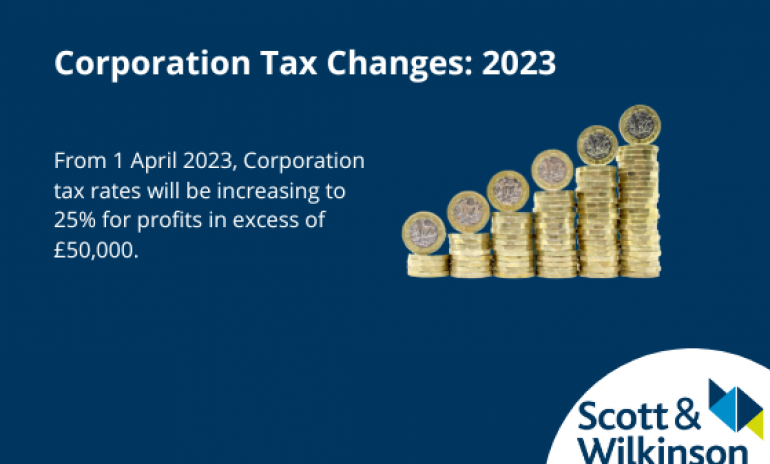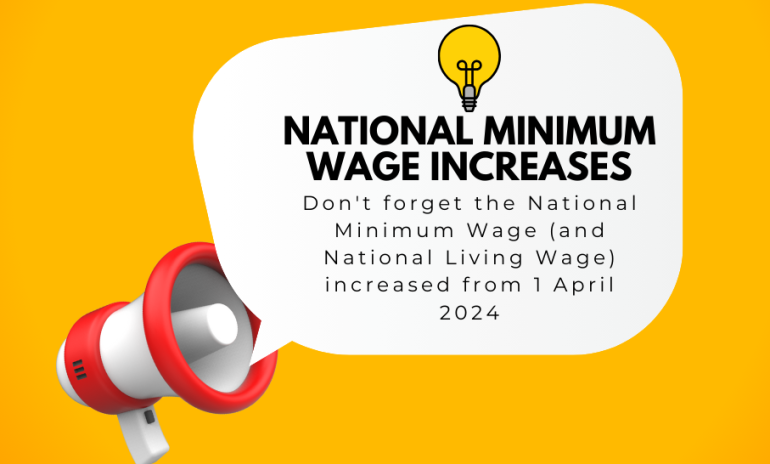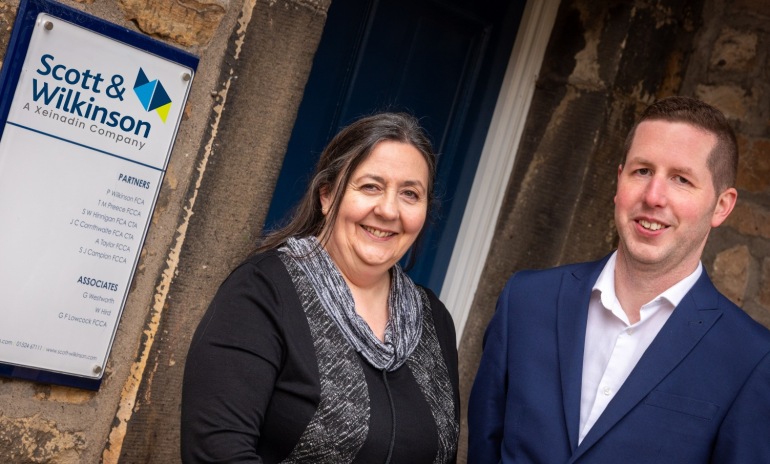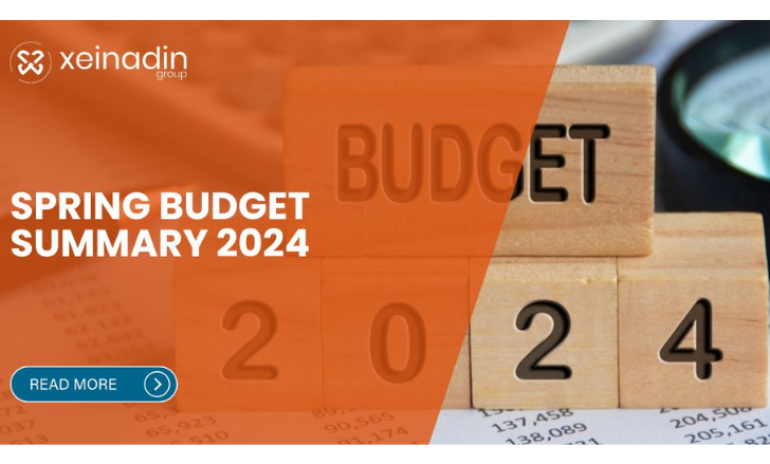Corporation Tax Changes: 2023
Date: 08/02/23

Corporation tax rates are changing for corporation tax years, starting on 1 April 2023. From this date, there will no longer be a single corporation tax rate company profits.
For most companies, the small profits tax rate will be 19% for profits of £50,000 or less. The tax rate for profits in excess of £250,000 is increased to 25%. Companies with profits between £50,000 and £250,000 pay the main rate of 25%, reduced by marginal relief. This is to provide a gradual increase in the effective rate of tax between £50,000 and £250,000.
The tax rate for company profits prior to 1 April 2023 was 19% no matter the amount of profits.
How to manage the increase in tax
As tax is increasing from 1 April 2023, it is prudent to plan for how to manage this. Advice should be sought on how to do this from professionals. In general, profits should be obtained this year rather than next year to ensure the lowest rate of tax payable is paid. Consequently, if it is possible to increase income or profit this year, steps should be taken to achieve this. Similarly, capital gains should be achieved this year rather than next year where possible. In addition, any discretionary expenditure should be deferred until the following tax year to reduce profits in the year when higher tax rates apply. Furthermore, the highest tax rate is payable on profits between £50,000 and £250,000 (see marginal relief below), so this band should be avoided if possible.
Marginal relief
Companies or organisations subject to corporation tax with profits over £50,000 are taxed at 25%, but any profits below £250,000 are reduced through the marginal relief mechanism.
To calculate marginal relief the following formula is used.
-
(Upper Limit - Profits) x Basic Profits ÷ (Profits x MSCR fraction).
-
The upper limit is £250,000.
-
Basic profits are the company’s trading profits and/or gains.
-
Profits are the basic profits and Franked Investment Income, which is usually dividends from other companies.
-
The MSCR fraction is the marginal relief corporation tax fraction and is currently 3 ÷ 200.
For example, if a company’s profits are £75,000 and there is no Franked Investment Income, the tax calculation is (£250,000 - £75,000) x (£75,000 ÷ 75,000) x (3 ÷ 200) = £2625.
To calculate this in stages, the following applies.
-
The upper limit is £250,000.
-
The taxable profit is £75,000.
-
The taxable profit including distributions is £75,000.
-
The MSCR fraction is 3 ÷ 200 = 0.015.
The full calculation is (£250,000 - £75,000) x (£75,000 ÷ £75,000) x (3 ÷ 200) = £175,000 x 1 x 0.015 = £2625.
To calculate the tax due, the corporation tax liability on £75,000 at 25% is £18750, marginal relief is £2625 and corporation tax liability after marginal relief is £18,750 - £2625 = £16,125. This gives an effective tax rate on total profits of 21.5%.
Where the accounting period is shorter than 12 months, the £50,000 and £250,000 limits are proportionally reduced. These limits are also reduced by the number of associated companies. For example, if a company has an associated company, the lower limit is reduced to £25,000 and the upper limit is reduced to £125,000. A company is an associated company if one of the companies has control of the other, or both are under the control of the same person or persons.
Marginal relief cannot be claimed by non-UK resident companies, close investment holding companies or where profits, including distribution from unrelated and unassociated companies, exceed £250,000.
Whilst the tax rate for profits below £50,000 is 19%, and the rate for profits over £250,000 is 25%, the effective tax rate for profits between £50,000 to £250,000 is 26.5%.
For example, if profits are £75,000 the tax can be calculated as £50,000 at 19% = £9500, plus (£75,000 - £50,000) at 26.5% = £6625, which equals in total £16,125.
The effective tax rate for profits between £50,000 to £250,000 is taxed at a high effective rate of 26.5%, higher than the upper rate of 25%. Consequently, it is not tax efficient to have profits between £50,000 and £250,000.
HMRC also provides a calculator to calculate the tax due where marginal relief is available. This calculator is available on the HMRC website.
Corporation tax on chargeable gains
Where business assets are sold or disposed of by a corporate body, corporation tax is chargeable on the profits and chargeable gains. When working out the chargeable gain, indexation allowance rates can be used to mitigate any increase in value between when the asset was acquired and 31 December 2017. From 1 January 2018, the indexation allowance was frozen. An asset acquired before 1 January 2018 and disposed of on or after that date can use an indexation allowance based on the Retail Prices Index of the factor for December 2017, regardless of the date when the asset is disposed of. Indexation allowances can be found on the HMRC website.
Advice
Companies and other organisations subject to corporation tax should obtain advice to determine how the increase in the corporation tax rate and the operation of marginal relief will impact them. This is a complex area, where it is easy to make errors and pay more tax than is necessary.
If you would like to speak to one of our advisors, you can contact our office at 01524 67111.

Author: Stuart Hinnigan FCA CTA
Stuart’s career in accountancy began when he joined Preston based Moore and Smalley in 1994 following his graduation from Lancaster University. He qualified as a Chartered Accountant in 1997 and then chose to specialise in...
0 Comment
Add your Comment
We have the ability to edit and/or delete posts and comments. Links should be relevant to the topics. Please note all comments are subject to review before inclusion.














Nobody has commented yet. Why not add one?